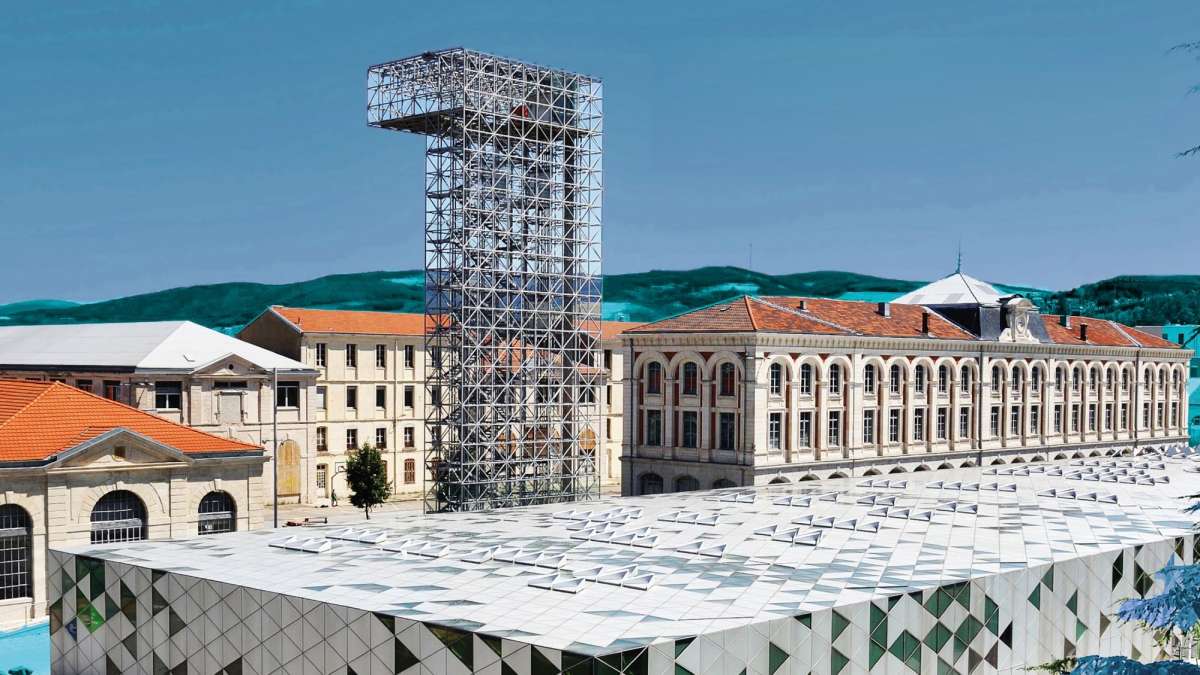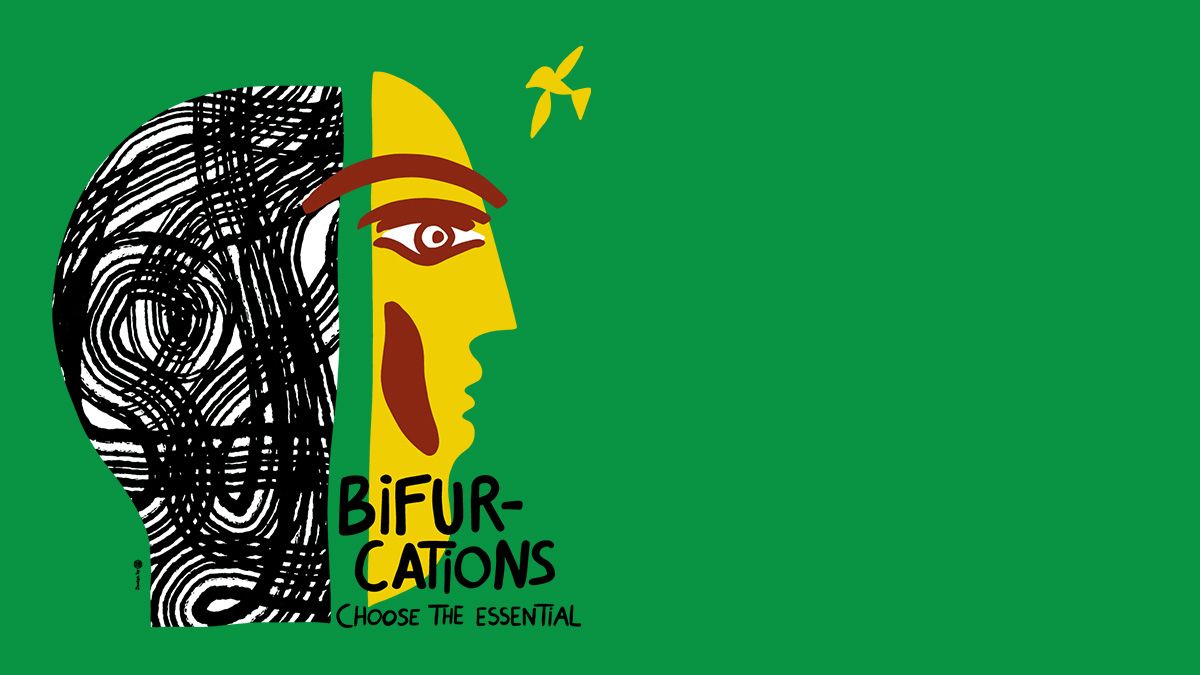Bifurcations
Choose the essential

The Biennale Internationale Design Saint-Étienne has been a major event in the French and European cultural calendar since 1998.
Sponsored by Ville de Saint-Étienne, France's only Unesco Creative City of Design, and by Saint-Étienne Métropole, it welcomes visitors from all over the world, designers, researchers, economic actors, intellectuals, students, art lovers and the simply curious, who come to query the practice of design and experiment with its methods.
In 2022, from 6 April to 31 July, visitors can discover the objects, services and installations presented in seven exhibitions covering almost 4,000m² and a free facilitation itinerary.
"Bifurcations" is the theme of this 12th Biennale Internationale Design de Saint-Étienne.
March 2020 saw a bifurcation open up in French life, a change of direction in record time. The way we lead our lives changed radically. The experience of restrictions and lockdowns, implemented simultaneously all over the world, has been a life-changing experience. Taking this test of our resilience as a starting point, thinking about negotiating these bifurcations becomes a challenge that is mobilising the design and allied professions as a whole and opening an essential cultural debate at the crux of the issues facing our technico-industrial society.
Africa, a continent where these contemporary ecological and political challenges are pivotal, is this edition's guest of honour.
One exhibition will focus on inspiring practices coming out of Africa.
Seven exhibitions look at what is at stake in design, in important areas of everyday life: domestic spaces, cars, the body, ways of learning, modes of consumption and production.
What is design already doing?
What more can it do?
How can it do it differently?
This 12th Biennale Internationale Design de Saint-Étienne is encouraging actors in the design sector to set off in search of adventure, to take a step sideways to explore new pathways, here and now. It also invites the public to evaluate design as a tool to choose which road to take.
The Cité du design and Esadse (Saint-Étienne Higher School of Art and Design) have put together a Biennale that will appeal to all, the design-initiated and the uninitiated, one which imagines bifurcations for individuals, collective experiments and all kinds of creative, agile and innovative actions.
Organised to tie in with the French Presidency of the Council of the European Union, the Biennale Internationale Design Saint-Étienne is in line with both the UN 2030 Agenda and its sustainable development goals.
With 7 exhibitions and more than 150 events, the Biennale is and invitation to join a collective reflection on if and how design can support us when faced with bifurcations. A critical, forward-looking tool, an inventive method, a cultural phenomenon, design is the subject of the debate in Saint-Étienne.
Bifurcations and design
A bifurcation is a point in a road where it splits into two branches or forks, providing us with a choice. In our lives we are faced with a series of bifurcations, constantly influenced by events that make us switch to other directions. Whether we seek them out or they are imposed on us, whether they are expected or unexpected, the choices we lake when faced with these bifurcations punctuate our lives and shape our societies. They can be small everyday things, or big life choices, extraordinary or structural. For example, the industrial revolution is a historic process that has oriented the lives of several generations. It was a turning point, a decisive moment when we could collectively choose between different possible technical trajectories, such as that of renewable energies. At the time we took the fork that led to the thermo-industrial model that we are totally dependent on today.
And in fact it was this industrial destiny that gave rise to design as a discipline.
Acceleration is the great claim of modernity: progress and speed to hand-in-hand. If we look back at the successive crises since the beginning of the century, the lesson we might learn is to slow down, take some time, observe, stop predicting. In short, an ancestral wisdom that would allow us to accomplish the task facing us more serenely: the sum of bifurcations facing us where we have to choose which fork to take to deal with the ecological and social crises ahead, as a means for our technical societies to come back down to earth. We cannot claim to be totally in control of the results of our decisions in these bifurcations, but we can try to find – as in aikido - a path that will take account of the movements and energies at work to build a harmonious future.
Can artists and designers accompany us on this path? With this Biennale we discover how they write their roadmap with others, multiply the paths they take, share their tools, ponder the forms of poverty, sobriety, frugality. And how that echoes through our immediate material environment.












